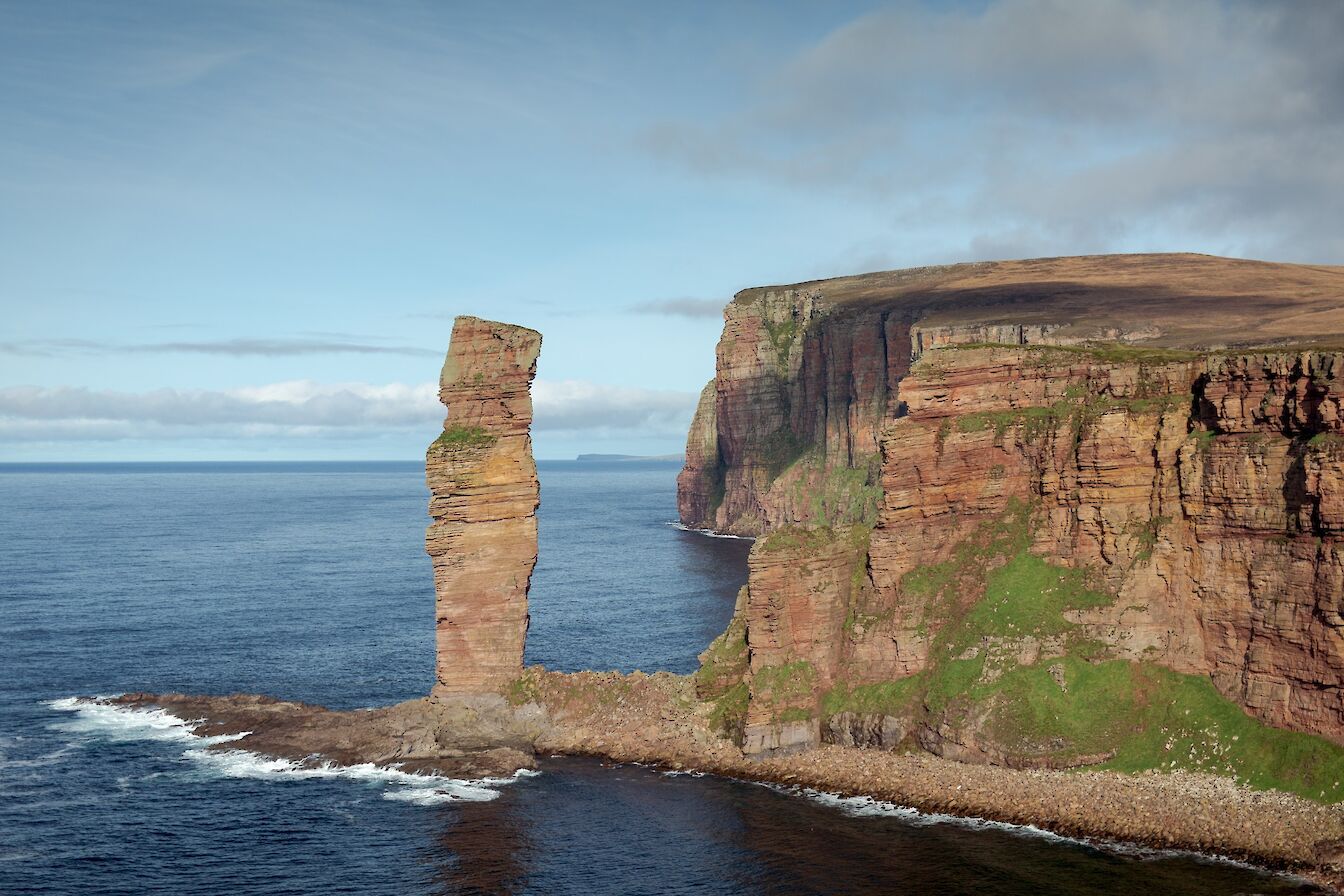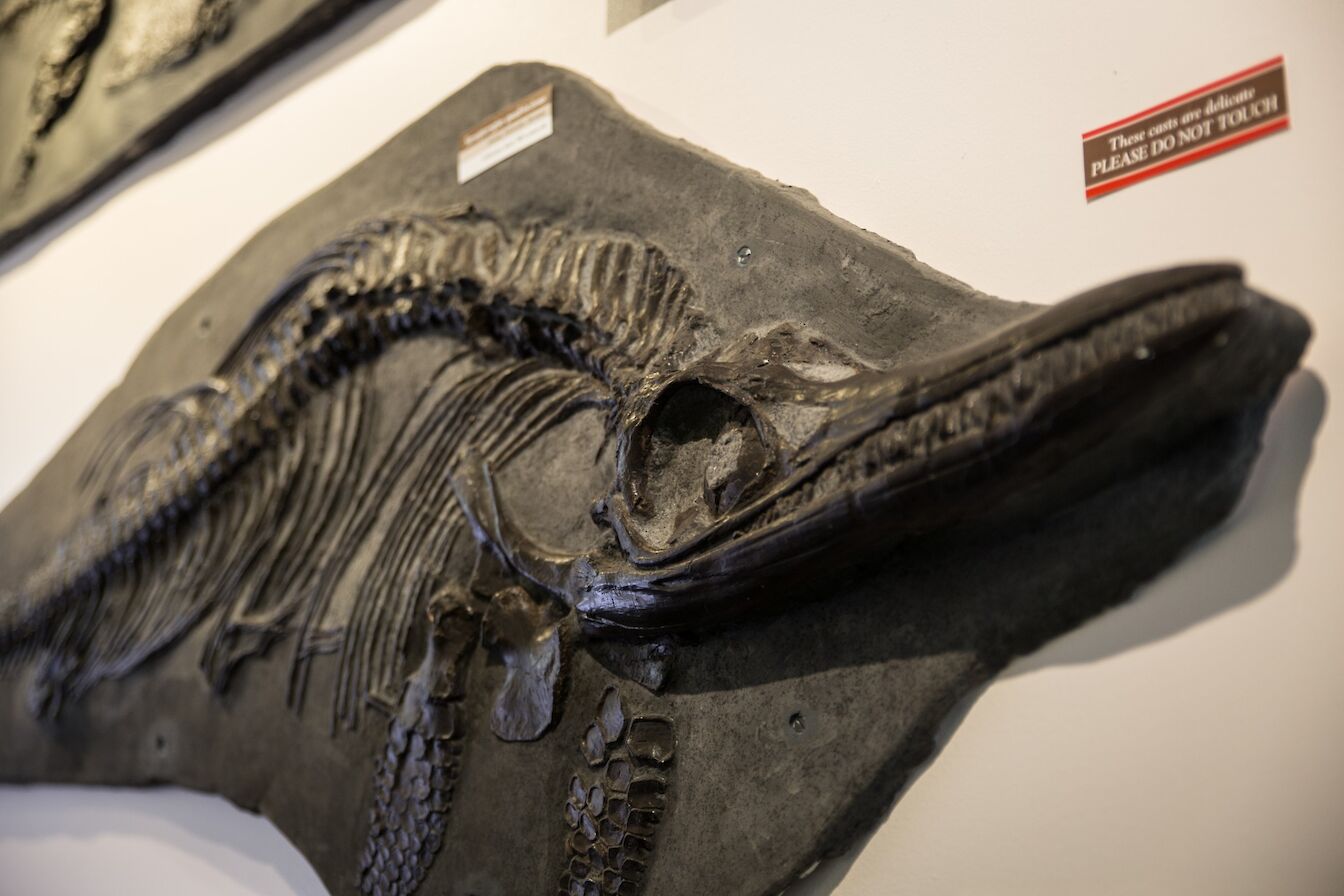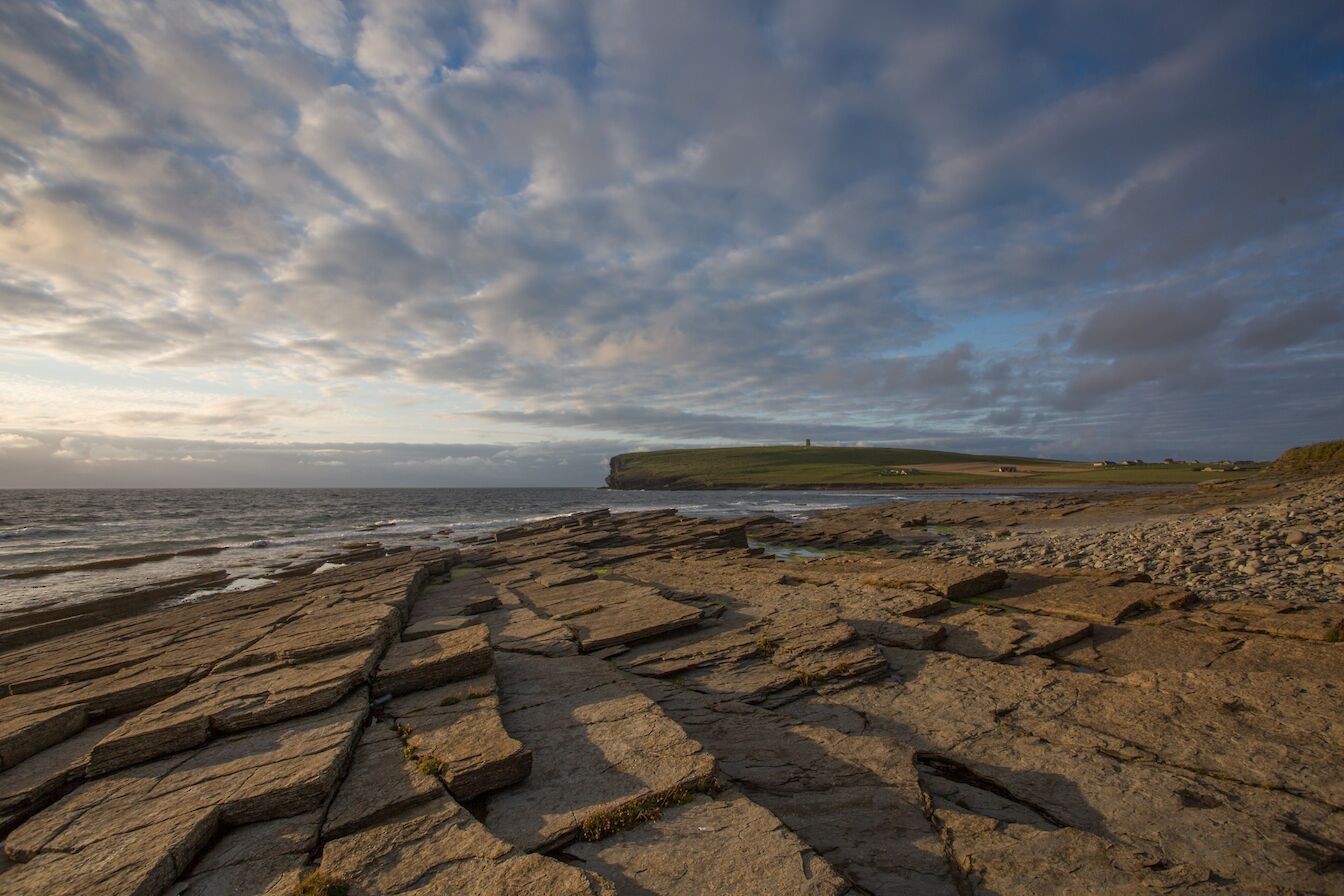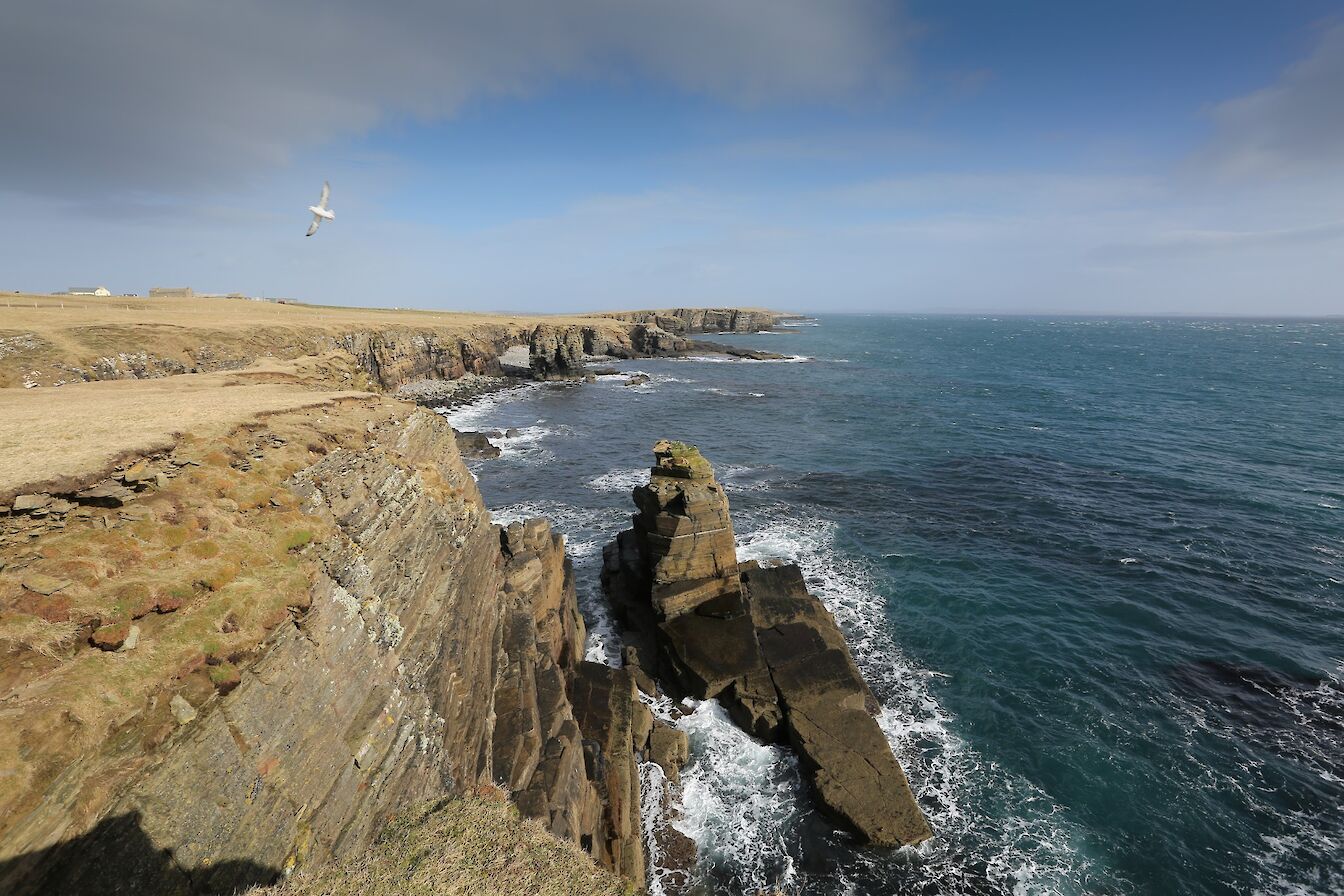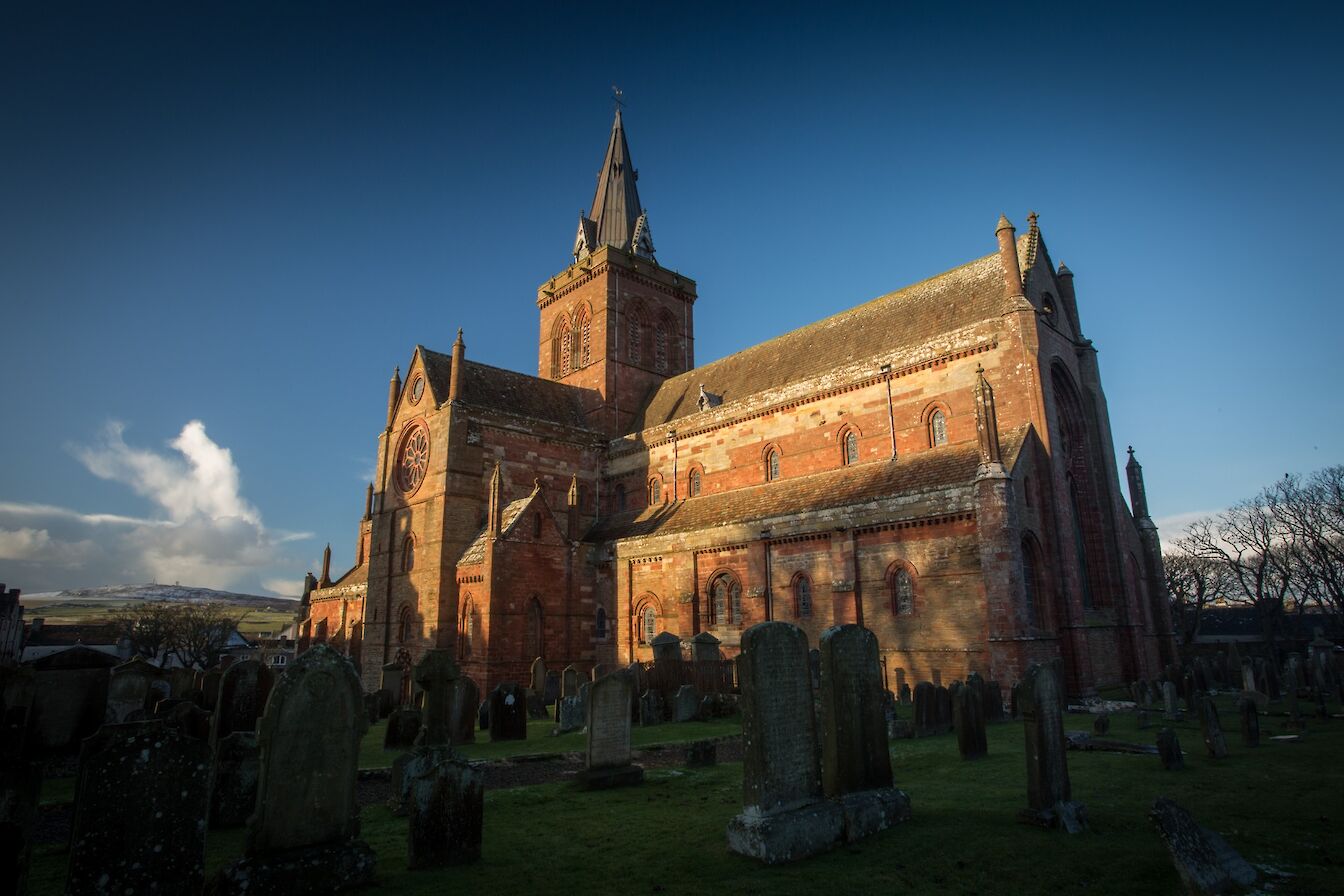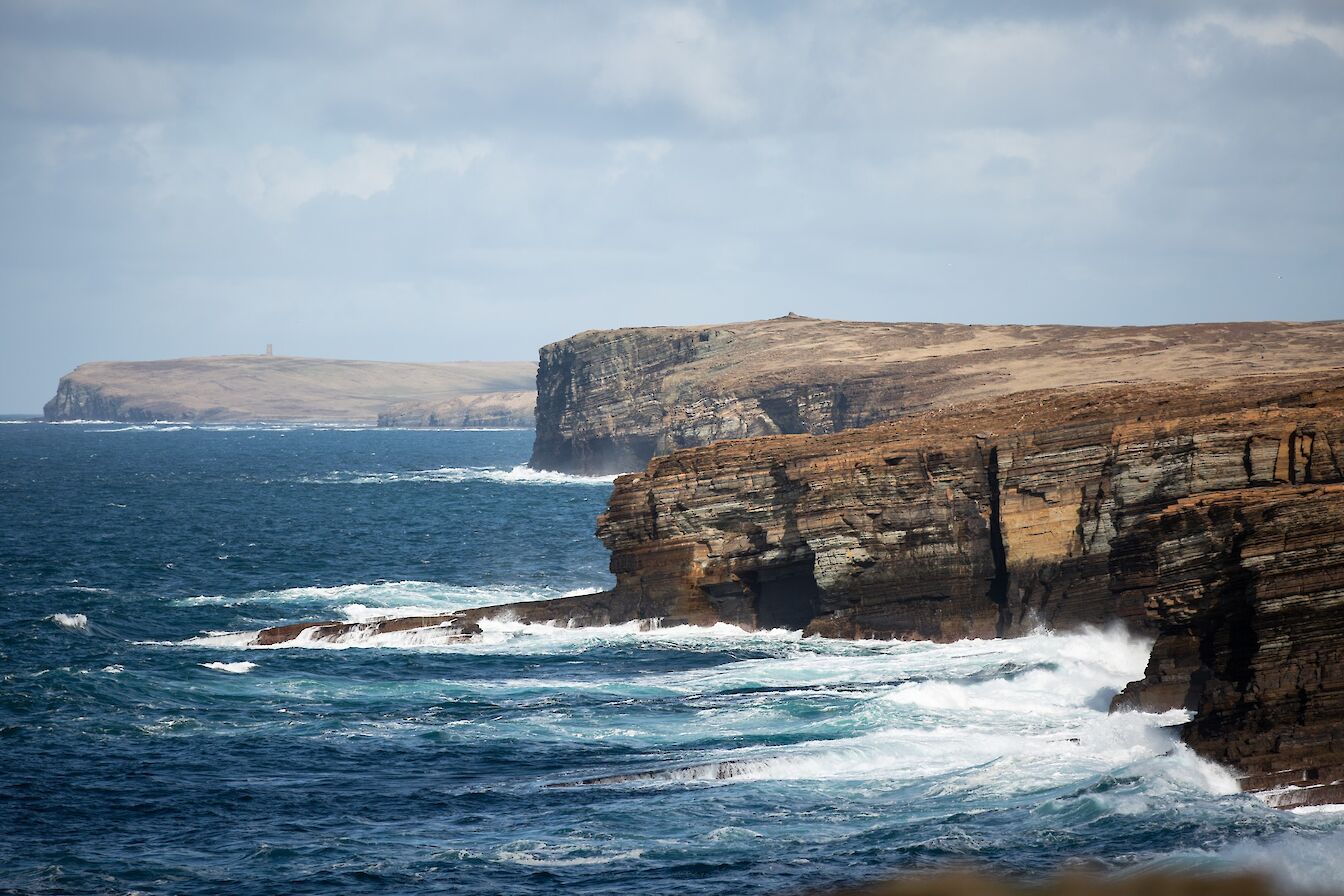Orkney’s geology is quite breathtaking, and thanks to millennia of wild weather and seas crashing ashore, much of it can be found in plain sight for everyone to enjoy.
Around 400 million years ago what was to become the Orkney of today was found south of the Equator. Slowly but surely, the landmass moved north and the islands were formed, with glacial erosion creating our rolling hills and ridgelines, and carving out great channels of water like Hoy Sound and the Westray Firth.
Spectacular sandstone
Much of what you’ll see was formed during the Old Red Sandstone of the Devonian period, with exceptions found around Stromness, Rousay and Eday. If you’re a geology enthusiast or student then there is no shortage of sites to visit and samples to take, but if you just like looking at natural features, our landscape definitely delivers.
Sea stacks and craggy cliffs
Geological highlights include our many sea stacks. The Old Man of Hoy is perhaps the most famous, and a careful look showcases the pinks, yellows and reds of Upper Old Red Sandstone. Other stacks, at Yesnaby and at North Gaulton, also provide a glimpse into millions of years of history.
The coastline and cliffs at places like Yesnaby, Marwick and Mull Head offer clear examples of Orkney’s geology, with great slabs of rock and flagstones jutting out at all angles.
There are geos, carved into the coastline by the sea, and gloups and blowholes to be found throughout the islands. The Hill of White Hamars stretch of coastline in Hoy is a spectacular spot with most of these features in abundance.
Geology in Orkney's history
Although remarkable in its own right, Orkney’s geology has also greatly influenced our ancient and more recent history. From stone dykes and traditional flagstone floors, to iconic stone circles, chambered tombs, and the magnificent sandstone cathedral of St Magnus, Orkney’s geology has long been directly connected to the people of the islands.
The Orkney Fossil & Heritage Centre is an ideal place to start your geological adventure here, with a vast display of fascinating fossils and plenty of information on how these islands came to be at 59 degrees north.
